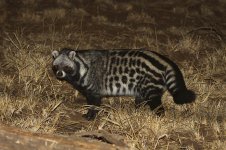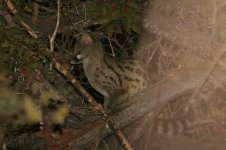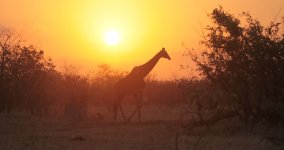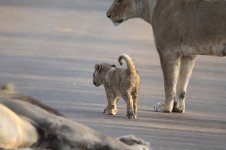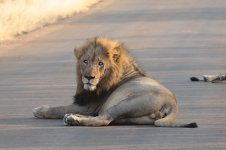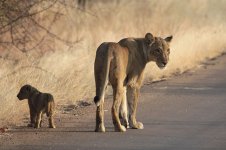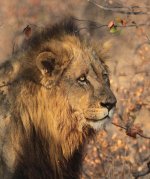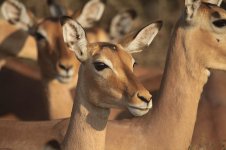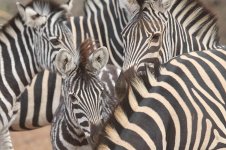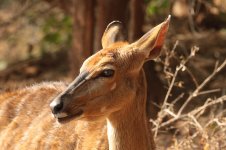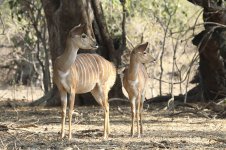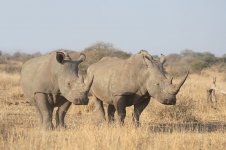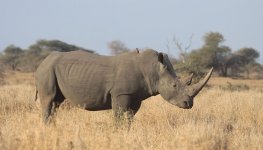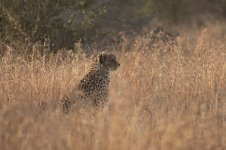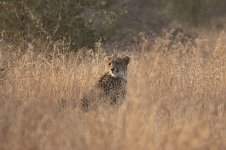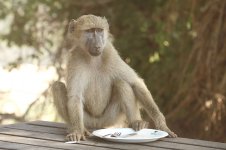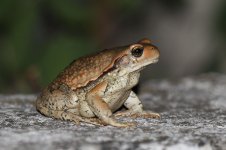23 July. Kruger, Pafuri & Shingwedzi.
An hour pre-dawn, brewed up a coffee, tiptoed over to my night cam, zipped through the images ...nearly spit the coffee all over the screen! An animal I had not even thought about, an animal I have never even seen, but there it was, 2.30 a.m. slinking past, the spots and stripes of an African Civet! Hmm, what a little stunner, no prizes for guessing what I would be up to the following night!
A little later, still under the cover of darkness, we slipped out of Punda Maria, the destination for the day being the riverine forests and savanna at Pafuri, the most northerly extreme of Kruger National Park and right on the borders on both Zimbabwe and Mozambique. The journey up is largely through thick bush, fairly uneventful for the most part, but with the rise of the sun, bits and bobs did include a Steenbok, a Pearl-spotted Owlet, several Long-tailed Shrikes and large flocks of Golden-breasted Buntings, a total of at least 60 encountered.
About 15 km short of Pafuri however, the action began in style - blocking the road, a pride of Lions having a morning snooze. One big male, one lioness and two small cubs, all splayed out across the road, presumably soaking up the warmth from the dark surface. Morning rush hour with class, just us and the Lions, the pride eventually staggered to their feet and ambled along for a hundred metres or so before veering off into the bush.
With the landscape now transforming, Baobabs appearing on rocky ridges, concentrations of Impala increasing and a few Kudu also emerging, we continued the dozen or so kilometres more to reach the broad Luvuvhu Valley. And what a splendid sight awaiting us, the area far more open and the numbers of animals most impressive, Warthogs trotting past, immense herds of Impala, gatherings of Nyala and occasional Plains Zebra and Kudu. Gangs of Baboon were trawling the area, climbing termite mounts and rooting through scrub, clear signs of Elephants were apparent everywhere. To this backdrop, the first birds of Pafuri - both Yellow-billed and Red-billed Hornbills, a flock of Green Wood-Hoopoes, roving Red-billed Buffalo-Weavers, abundant Meve's Starlings and much more.
First port of call in this excellent area was the bridge of the Luvuvhu River. Ignoring for a moment the Hippopotamus that were flopped across sandbanks, this point allows both good observations of the river channels and the adjacent riverine forest, but also the skies above. A key site for assorted swifts, the presence of large flocks of wheeling Little Swifts was a good omen, hopefully the rarer cousins would be amongst them. The haunting calls of African Fish Eagles echoed from downriver, Wire-tailed Swallows flitted low over the river, Lesser Striped Swallow also present for a while. In the skies above, my scans eventually reaped the rewards - two Horus Swift (not very common here in the southern winter) and, much later, the real prize, two Mottled Spinetails and three Bohm's Spinetails, the latter a little bat-like thing, truly a speciality of northern Kruger. African Pied Wagtail and Black-headed Oriole also seen at this locality.
Time for breakfast, I thought. The picnic site a few kilometres east of the bridge was a most exquisite locality for morning munchies - water boiling away on the stove, sandwiches disappearing up a tree in the paws of a thieving Vervet, occasional Nyalas wandering through, ranks of Crocodiles and Hippos in the adjacent river. And what birds, the freedom to wander without car rendering it all the better, Water Thick-knees and Goliath Heron on the river, Tropical Boubou in riverine scrub, Ashy Flycatcher and Southern Black Flycatcher in the trees, Kurrichane Thrush hopping across the picnic site itself, plus several Brown-crowned Tchagras and little flocks of Blue Waxbills and Red-billed Firefinches. Topping the lot, however, a right bevy of chat-type things - three White-throated Robin-Chats, one glorious Red-capped Robin-Chat, four Eastern Bearded Scrub-Robins and one White-browed Scrub-Robin, fantastic all. Also Black-backed Puffback, Meve's Starlings, Green-backed Camaroptera and assorted added extras. Yup, one of the better places to stop for breakfast.
Heading on, we meandered further east along the river, the area not only rich in large mammals, particularly Zebra and Impala, but also remaining excellent for birds, flocks of White-crested Helmet Shrikes soon encountered, followed by a loose flock of White-crowned Shrikes. Also noted Chinspot Batis, Tinkling Cisticola, Brown-hooded Kingfisher and loads of Emerald-spotted Wood-Doves. Journey's end was Crook's Corner, vast open sand banks on the confluence of the Luvuvhu and Limpopo Rivers. A hide-out for bandits from days long gone by, a short paddle across the river takes you to Zimbabwe directly ahead or Mozambique to the right, in both directions via considerable numbers of Crocodiles! Far better to just relax and enjoy the birds, White-fronted Bee-eaters on riverside perches, Golden-tailed Woodpecker and Terrestrial Brownbul in the woodland behind, White-crowned Lapwing on the sand banks out front, nice all round.
And with that, we began our journey south, a final loop though the Pafuri area adding a Red-crested Korhaan, several Brown-hooded Parrots and, hitching a lift on Elephants, a flock of Red-billed Oxpeckers.
Kruger is a vast place, distances are deceptively large and there are always plenty of distractions to slow you down - for that reason, our next stop for the night was Shingwedzi, not that far, but situated south of a large area of dense Mopani woodland, just about the hardest of the Kruger habitats to see anything in. We traversed this area with predictably little seen, the highlights being Kori Bustard and, even more so, five splendid Roan Antelopes, not always an easy species to find in Kruger.
I knew very little about Shingwedzi prior to arrival, but was to be pleasantly surprised - not only was it convenient for Kanniedood Dam, but it was also going to provide my best night in Kruger. Though quite late by the time we arrived, we still managed to squeeze a couple of hours in at the dam, very nice for for both birds and mammals, the former including Saddle-billed Storks and flocks of Yellow-billed Storks, the latter including Hippos, Waterbuck, Common Reedbuck and another Sharpe's Grysbok. A big herd of Elephants blocked the road on route back to camp, I was a little late, a definate no-no in Kruger!
Dark descended, my tent was right at the camp's fringe, grassland and scattered acacia just beyond. I had high hopes of critters of the night appearing, a certain spotted and stripey thing now top of my list. I did not have long to wait - less than an hour after dark, shuffling sounds, I clicked on my light. Bingo! African Civet directly ahead! What a corker, nosing about between two acacias, totally unfussed by my presence. And then, stone me, another trotted in, brilliant. And if that weren't enough, two Large-spotted Genets also appeared, plus one Scrub Hare. With pictures of all, plus my night cam now set, I retired to my sleeping bag. Mighty roars of a Lion as a lullaby, not quite so soothing as the standard, but superb. Goodnight.





